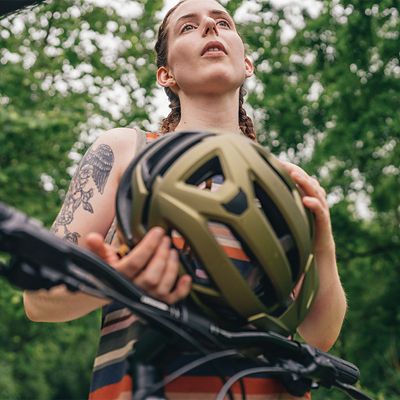
No one wants to be uncomfortable while riding their bike, and one of the most important factors in riding comfort is finding the right saddle, or bike seat. The way a person sits on a bike is influenced by everything from the width of their sit bones to their overall flexibility—in other words, each rider is unique. Finding the saddle that fits your body and your riding style is crucial to enjoying your time on the bike. Here’s how to find the right one for you.
Questions to Ask Yourself
Before you buy a saddle, ask yourself a few questions, starting with where and how you plan on riding.
Am I a fair-weather rider?
Some saddles come with features that are specifically designed for nasty weather. If you only ride when the sun is shining, you don't need to spend money on these upgrades.
How flexible am I?
Buy a saddle that works for you now, not one you hope to grow into. By choosing a saddle that matches your body and feels comfortable, you’ll ride more and become a better cyclist (rather than just wishing you were).
How much am I willing to spend?
Technology and materials will affect how much you pay for your saddle. Set a budget before you start shopping so you can get the best saddle that you can afford.
What’s in a Saddle?
Saddles are made up of several different parts.
Cover
The cover is the outermost material of the saddle. While it is usually made of synthetic material, some saddles use leather and others use more durable materials for heavy wear disciplines like mountain biking.
Padding
The padding is the squishy layer of the saddle. Be warned: More padding does not always mean more comfort.
Shell
The shell forms the basic shape of the saddle. It is usually a hard material, like plastic, but lighter, more expensive models use advanced synthetics and even carbon fiber, which cuts weight but adds to the price.
Rails
Rails run along the bottom of your saddle and allow the saddle to attach to your seatpost clamp. Rails can be made out of cheaper, heavier materials like steel, lighter metals like aluminum, and even ultralight carbon fiber (though you'll have to confirm your bike’s seat clamp works with carbon-fiber rails).
Types of Riding
There are a variety of saddle types to match different styles and disciplines of riding.
Mountain
Mountain bike saddles are often flatter from front to back, which makes it easier for you to slide off the back for better control on steep descents. These models often have shorter noses (the long, narrow part at the front of the saddle) to keep from catching your shorts or the inside of your leg as you sit and stand. Some will also have reinforced covers to endure the wear and tear that comes with mountain bike riding.
Road
Road saddles are often made out of more expensive, lightweight materials. In addition, they often have a small rise toward the rear to keep you from sliding backwards while you pedal. They will also frequently have a smaller, narrower shell and less padding to allow maximum freedom of movement for your legs and maximum power transfer to the pedals.
Recreational
Recreational saddles are made for more upright, casual riding. They often have a wide, well-cushioned seat and a short nose—since you’ll be riding upright, most of your weight will rest toward the back of the saddle.
Commuting
Commuting saddles usually have a mix of features found on mountain, road, and recreational models. They are often shaped like road saddles, but they have a bit more padding for comfort at lower speeds. Some offer features like waterproof covers to keep you dry in wet weather.



